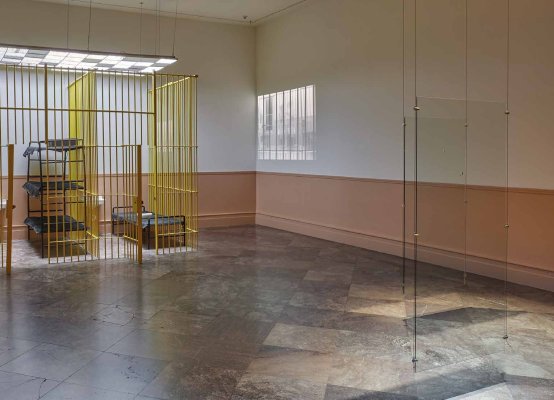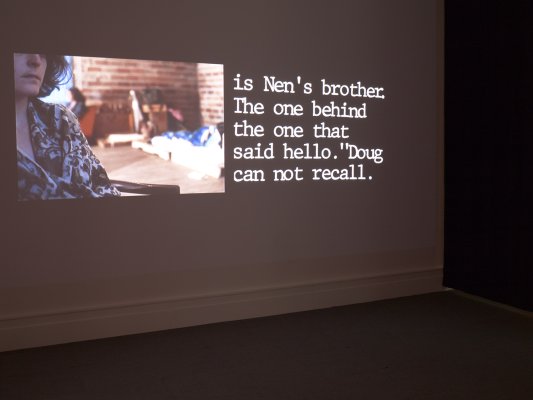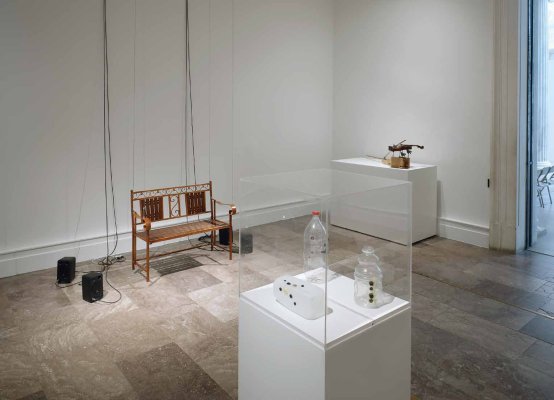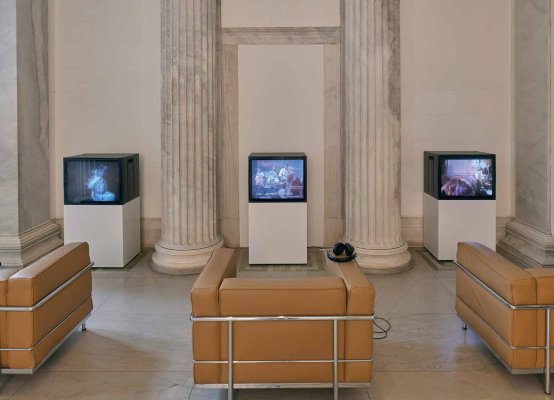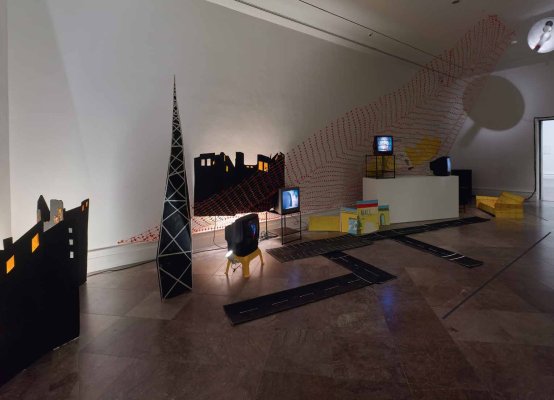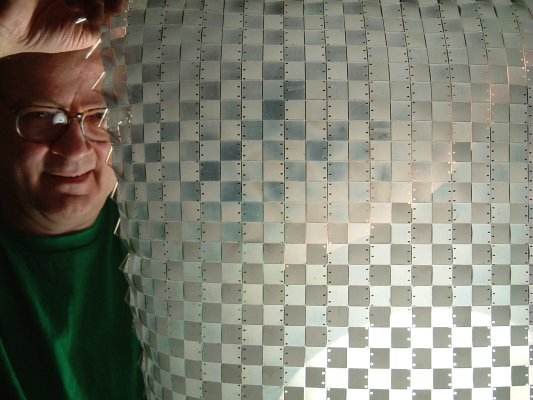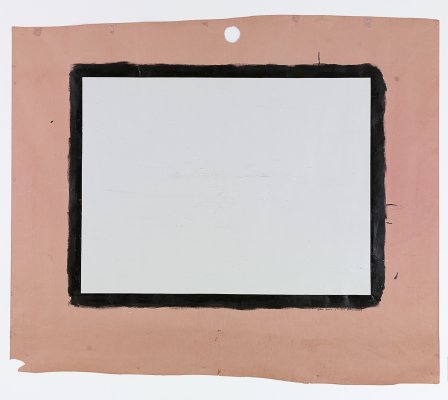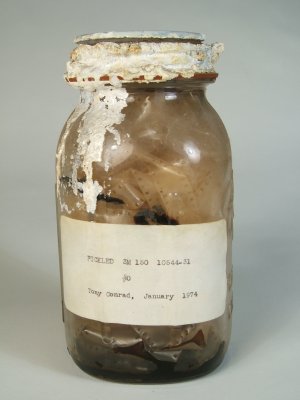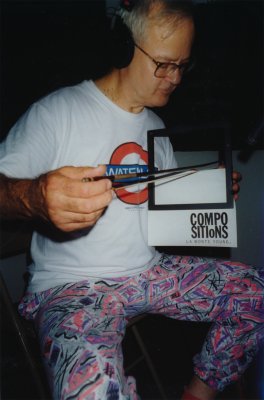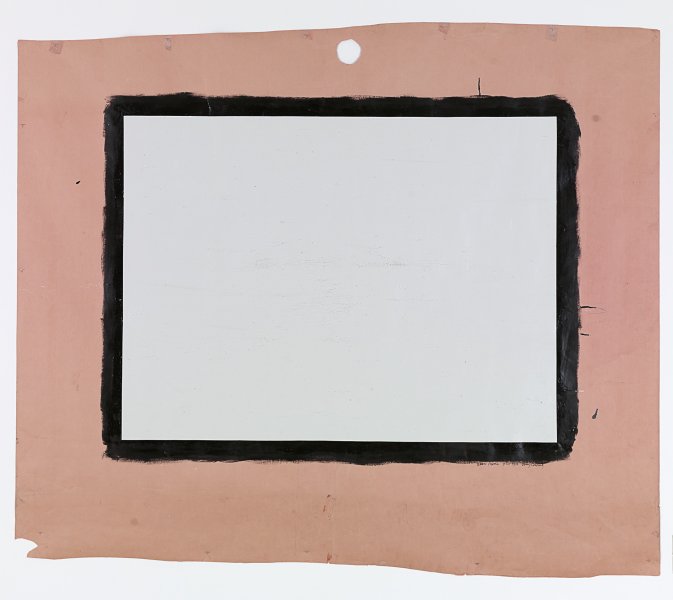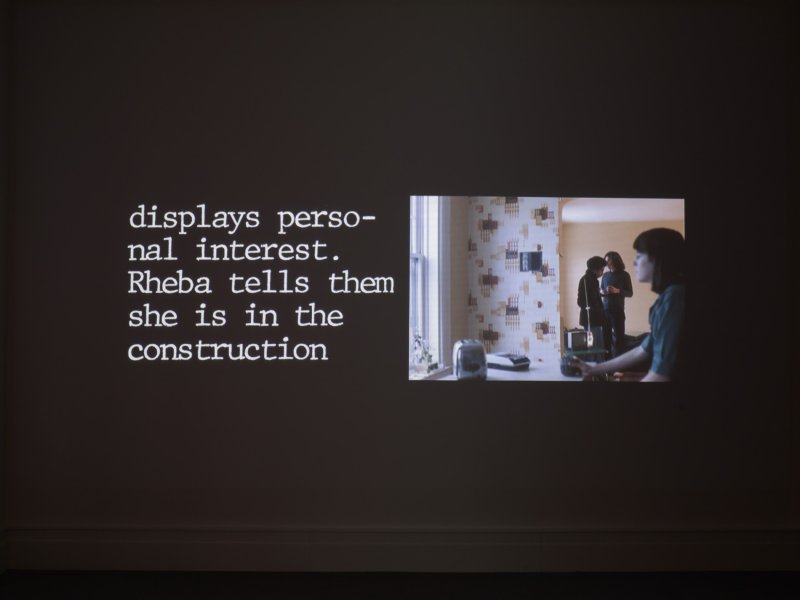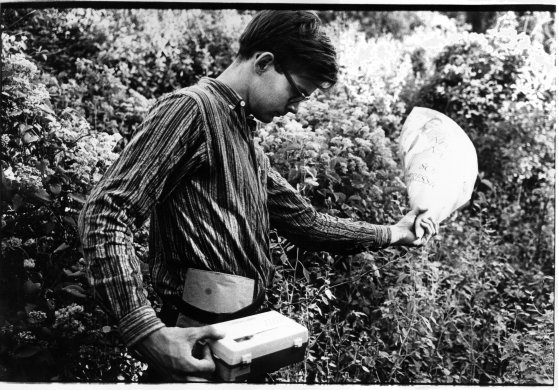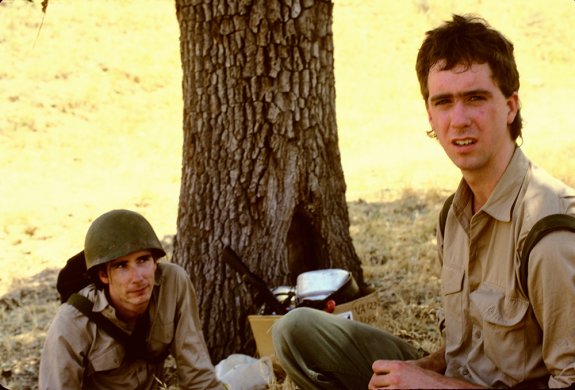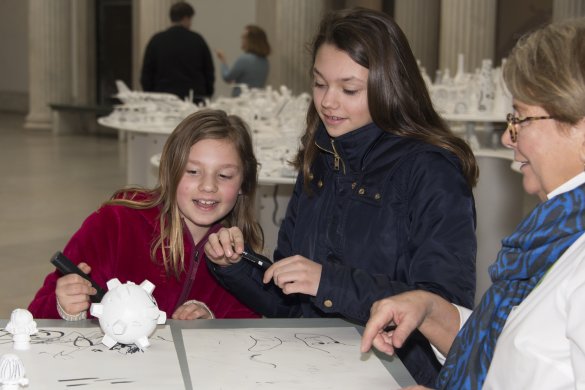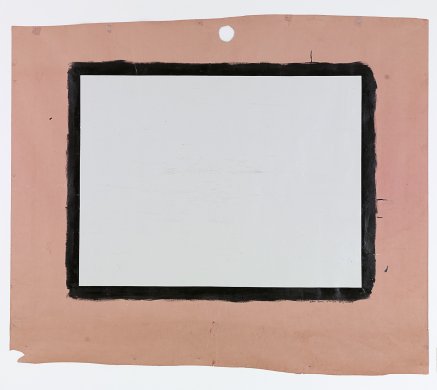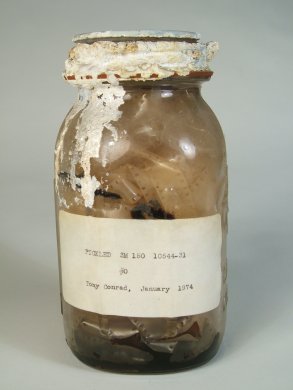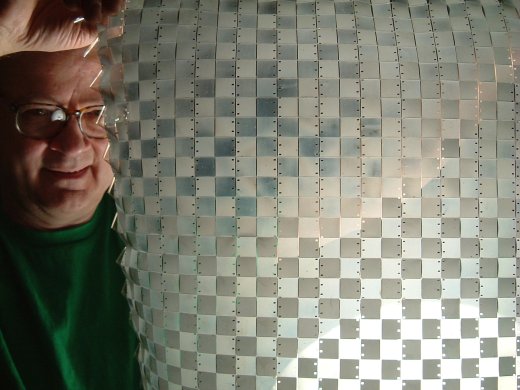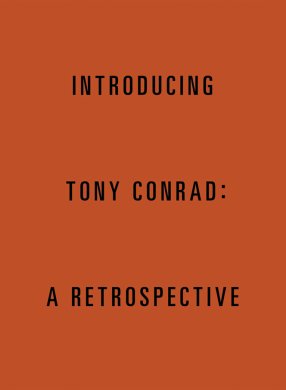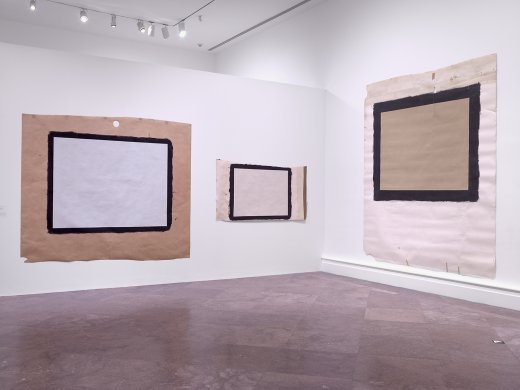Conrad’s first film, The Flicker, 1966—a stroboscopic experiment famous for its attack on both the filmic medium and its audience’s senses—soon led to projects in which he treated film as a sculptural and performative material. In Sukiyaki Film, 1973, for instance, Conrad rapidly stir-fried film and hurled it at the screen, and in his Yellow Movies, 1972–73, he coated paper surfaces with cheap white emulsion paint and planned for them to be screened as slowly changing, fifty-year “films.” He invented musical instruments out of materials as humble as a Band-Aid tin or a park bench and presented these acoustical tools as sculptures themselves. In the 1980s, his ambitious films about power relations in the army and in prisons assembled large casts of collaborators. Such rollicking projects and performances (with artists including Mike Kelley, Tony Oursler, and Joe Gibbons) signaled Conrad's lifelong pioneering of cooperative approaches to artmaking. Representative examples from these projects are joined in this exhibition by Conrad’s last sculptures and installations, which evoked and critiqued what he perceived as an emerging culture of surveillance, control, and containment.
Introducing Tony Conrad: A Retrospective
Saturday, March 3, 2018–Sunday, May 27, 2018
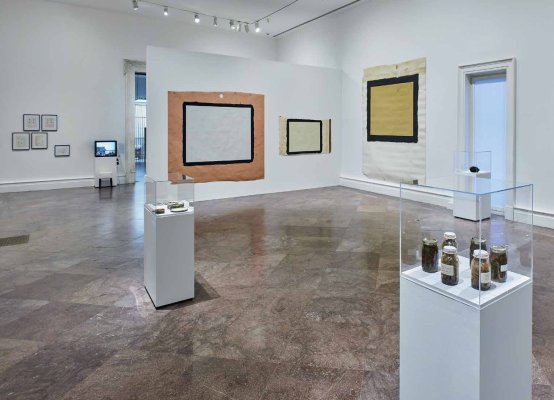
Installation view of Introducing Tony Conrad: A Retrospective. Photo: Biff Henrich/IMG_INK.
1905 Building, South Galleries
Throughout his six-decade career, Tony Conrad (American, 1940–2016) forged his own path through numerous artistic movements, from Fluxus to the Pictures Generation and beyond. Although he was best known for his pioneering contributions to both minimal music and structural film in the 1960s, his work helped define a vast range of culture, including rock music and public television. He once declared in an interview, “You don’t know who I am, but somehow, indirectly, you’ve been affected by things I did.” This exhibition, the first large-scale museum survey devoted to artworks Conrad presented in museum and gallery settings, is part of an ongoing reappraisal of his creative achievement. Indeed, because of the extraordinary scope of Conrad’s contributions to art and culture, this retrospective may yet be seen as only an “introduction.” Inspired by the spoken, written, and performed introductions Conrad regularly used to help frame screenings and presentations of his works, many of which are incorporated into the exhibition itself, it shows Conrad to be an unparalleled innovator in the mediums of painting, sculpture, film, video, performance, and installation, tenaciously working to challenge the boundaries between artistic categories.
A deep-rooted contributor to the cultural life of Buffalo, Conrad was a professor in the Department of Media Study at the University at Buffalo from 1976 until his death. He was a founder of Squeaky Wheel Film and Media Art Center and a frequent collaborator with Hallwalls Contemporary Arts Center and the Burchfield Penney Art Center. His regular programs for public access television, with his own Homework Helpline, 1994–95, and as part of the First Amendment Network, made him an influential voice within the community. In honor of Conrad’s collaborative spirit, the exhibition is divided into simultaneous presentations at the Albright-Knox Art Gallery and the University at Buffalo Art Gallery at the Center for the Arts. Additionally, many community partners have planned associated installations, screenings, performances, and more from January through May 2018. Learn more
The exhibition will travel for a copresentation at MIT’s List Visual Arts Center and the Carpenter Center for the Visual Arts at Harvard University from October 2018 to January 2019, and to the Institute of Contemporary Art at the University of Pennsylvania in February 2019.
The accompanying catalogue, published by the Albright-Knox Art Gallery in association with Walther König Verlag, is edited by Cathleen Chaffee, with contributions by Chaffee, Rachel Adams, Vera Alemani, Tony Conrad, Constance DeJong, Diedrich Diederichsen, Anthony Elms, David Grubbs, Henriette Huldisch, Branden W. Joseph, Andrew Lampert, Christopher Müller, Annie Ochmanek, Tony Oursler, Tina Rivers Ryan, Jay Sanders, Paige Sarlin, and Christopher Williams.
This exhibition is accompanied by a special audio tour featuring archival recordings of Conrad discussing his work. The audio tour includes excerpts from interviews produced and recorded by Tyler Hubby; Carnegie Museum of Art, Pittsburgh; and Gareth Long, Kunsthalle Wien.
Introducing Tony Conrad: A Retrospective is organized by the Albright-Knox Art Gallery with the support of the University at Buffalo Art Galleries. Its presentation in Buffalo is organized by Cathleen Chaffee, Chief Curator, Albright-Knox Art Gallery, and Rachel Adams, Senior Curator, University at Buffalo Art Galleries, with Tina Rivers Ryan, Assistant Curator, Albright-Knox Art Gallery.
Admission to this special exhibition is Pay What You Wish on M&T FIRST FRIDAYS @ THE GALLERY.
The Albright-Knox Art Gallery’s exhibition program is generously supported by The Seymour H. Knox Foundation, Inc.
